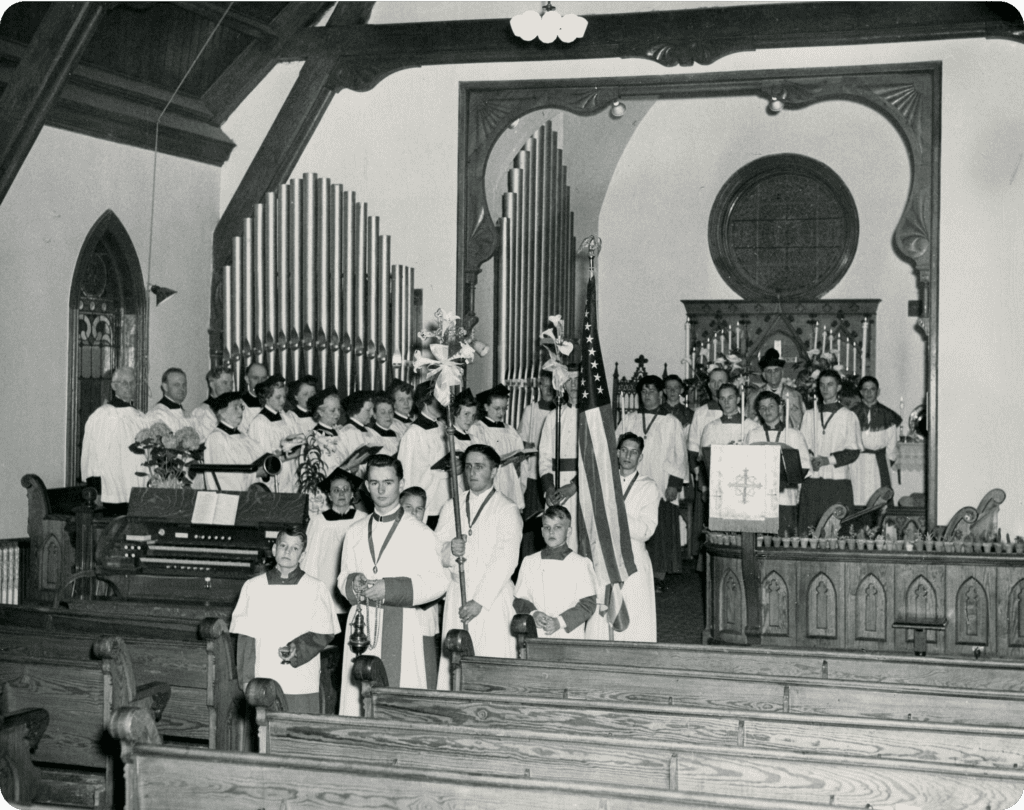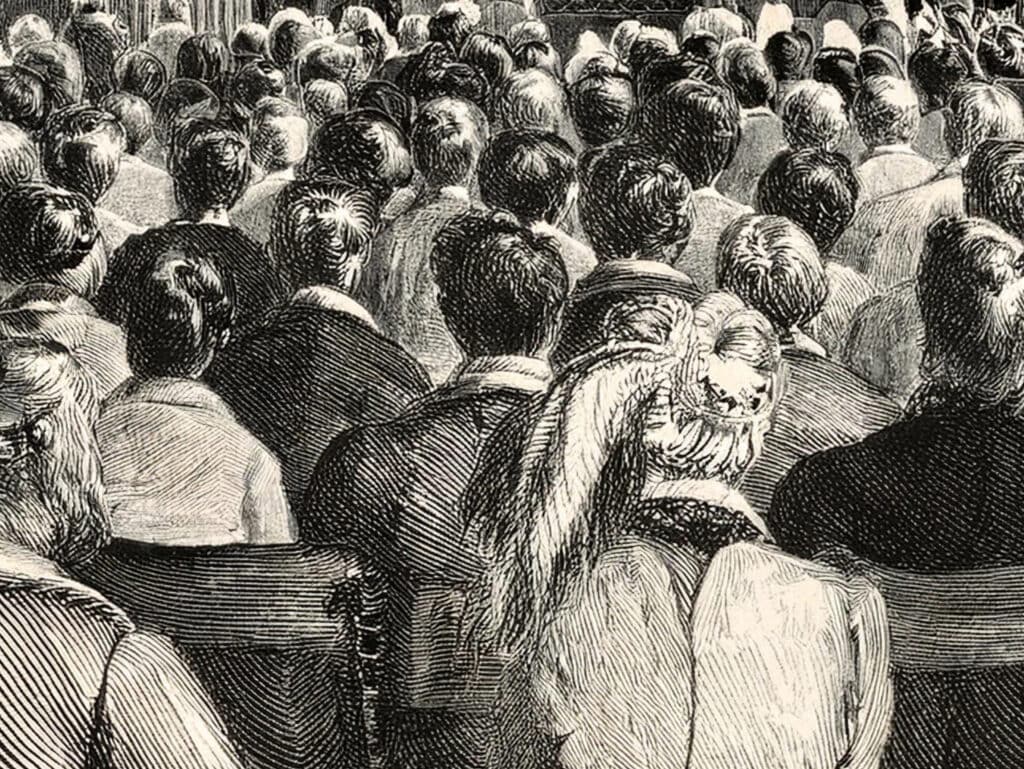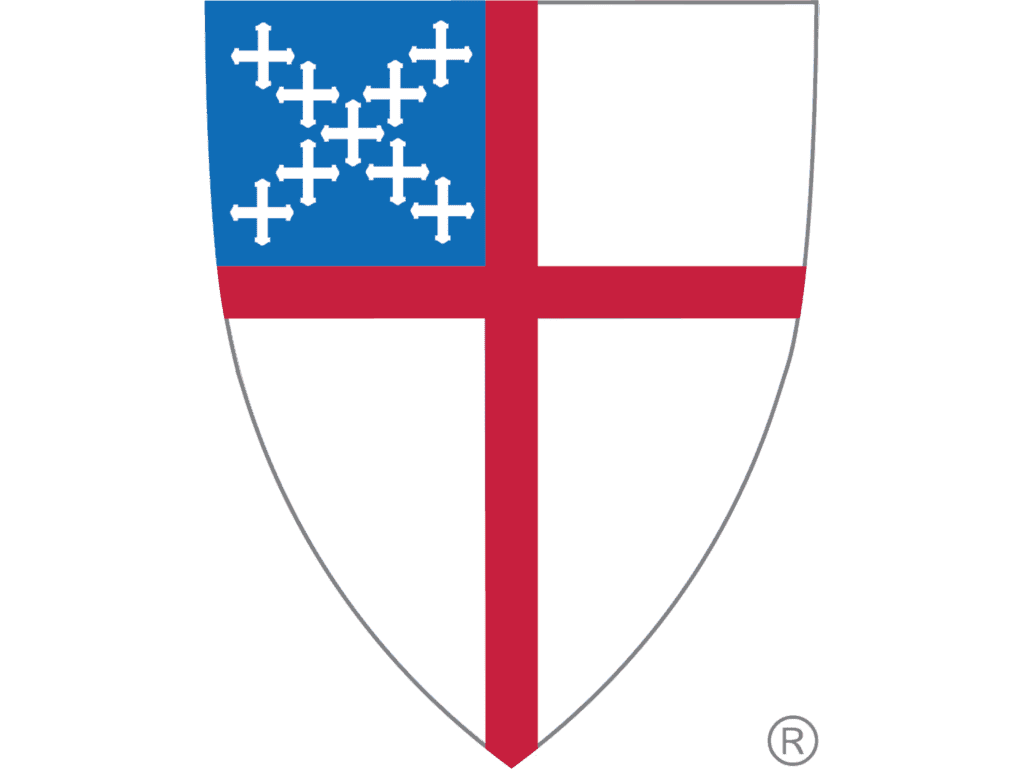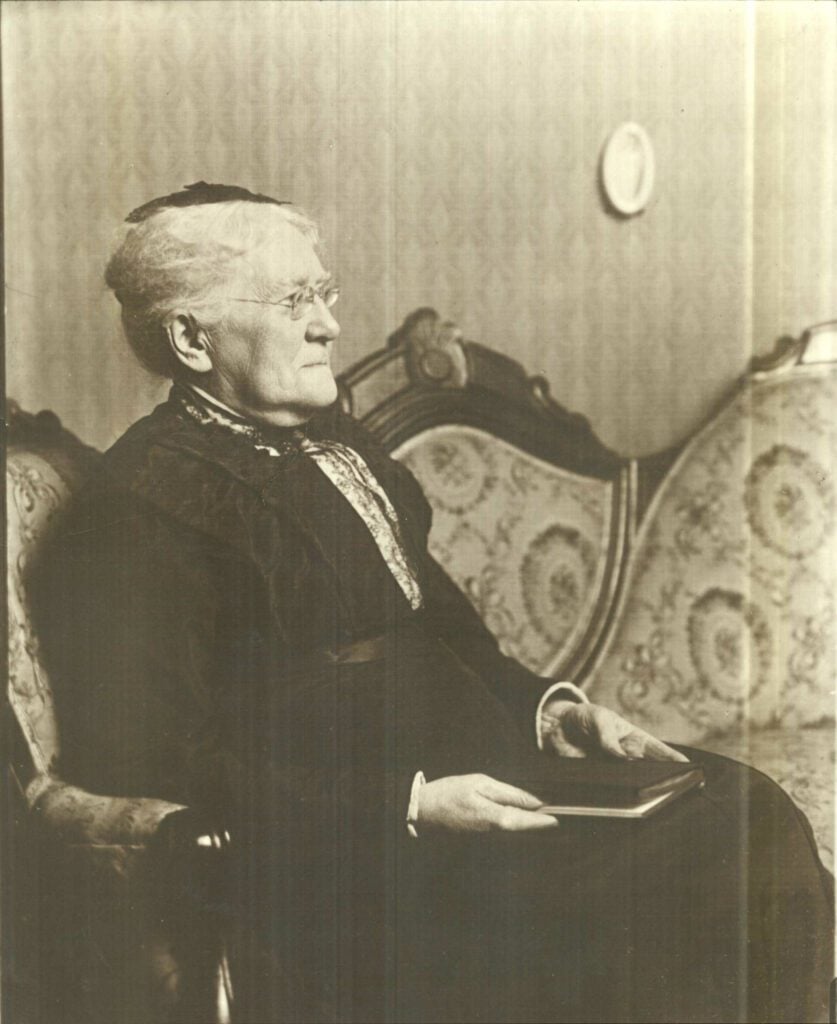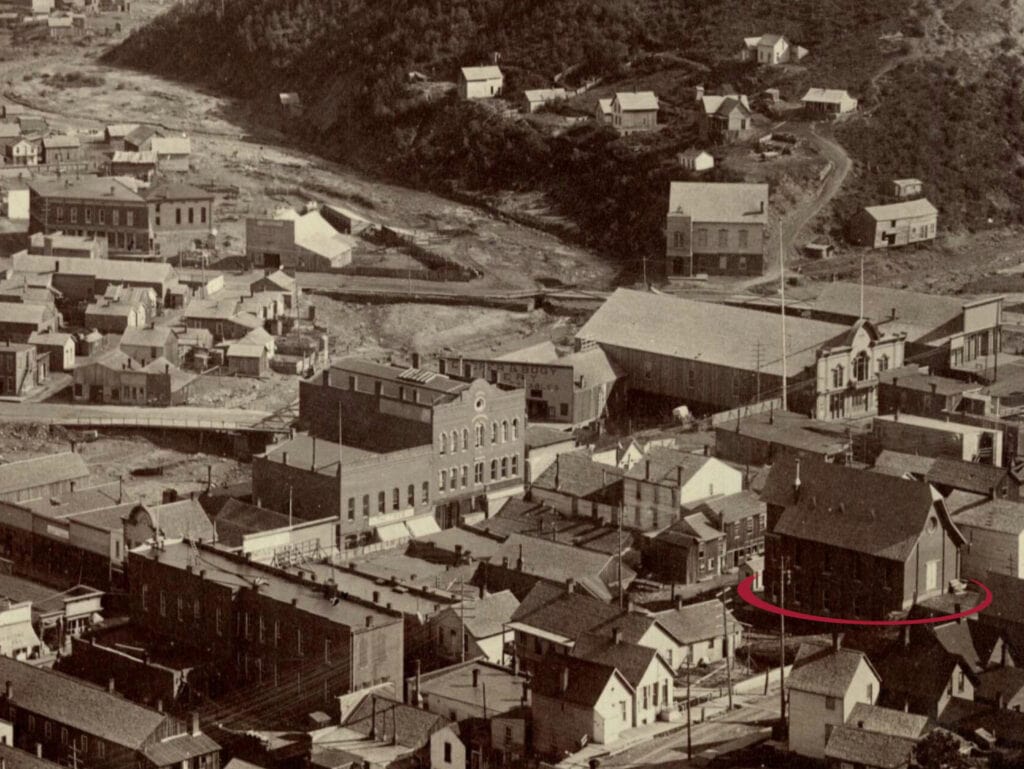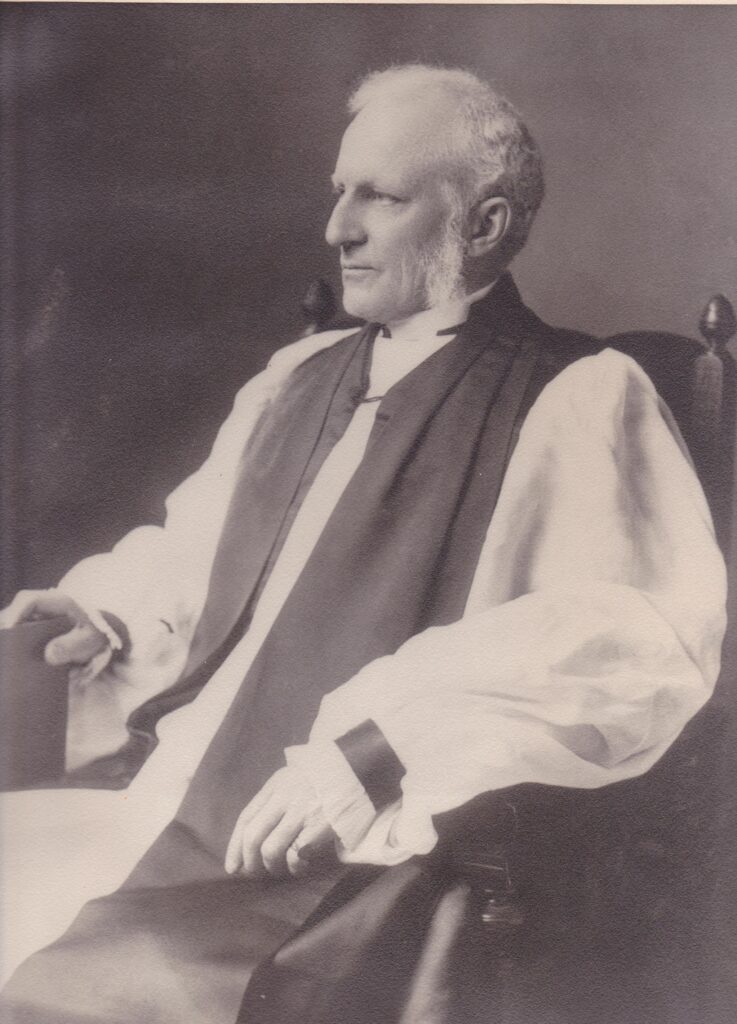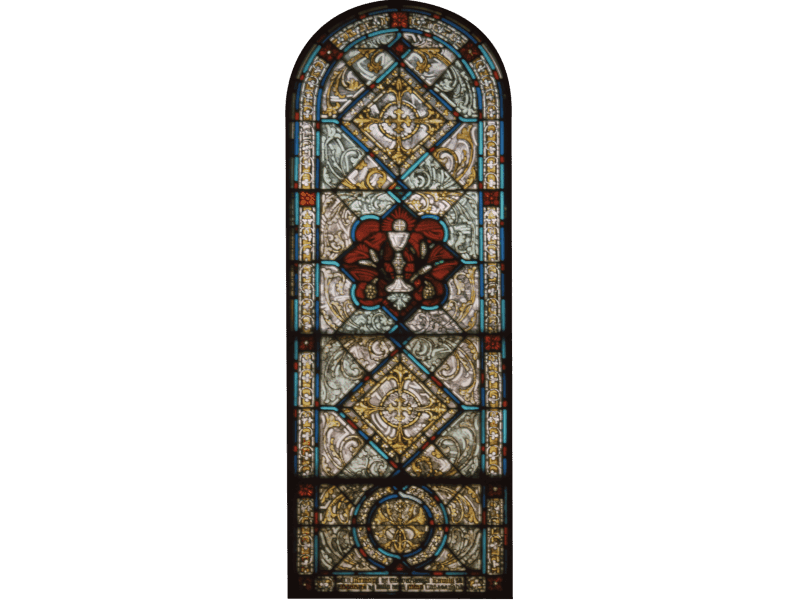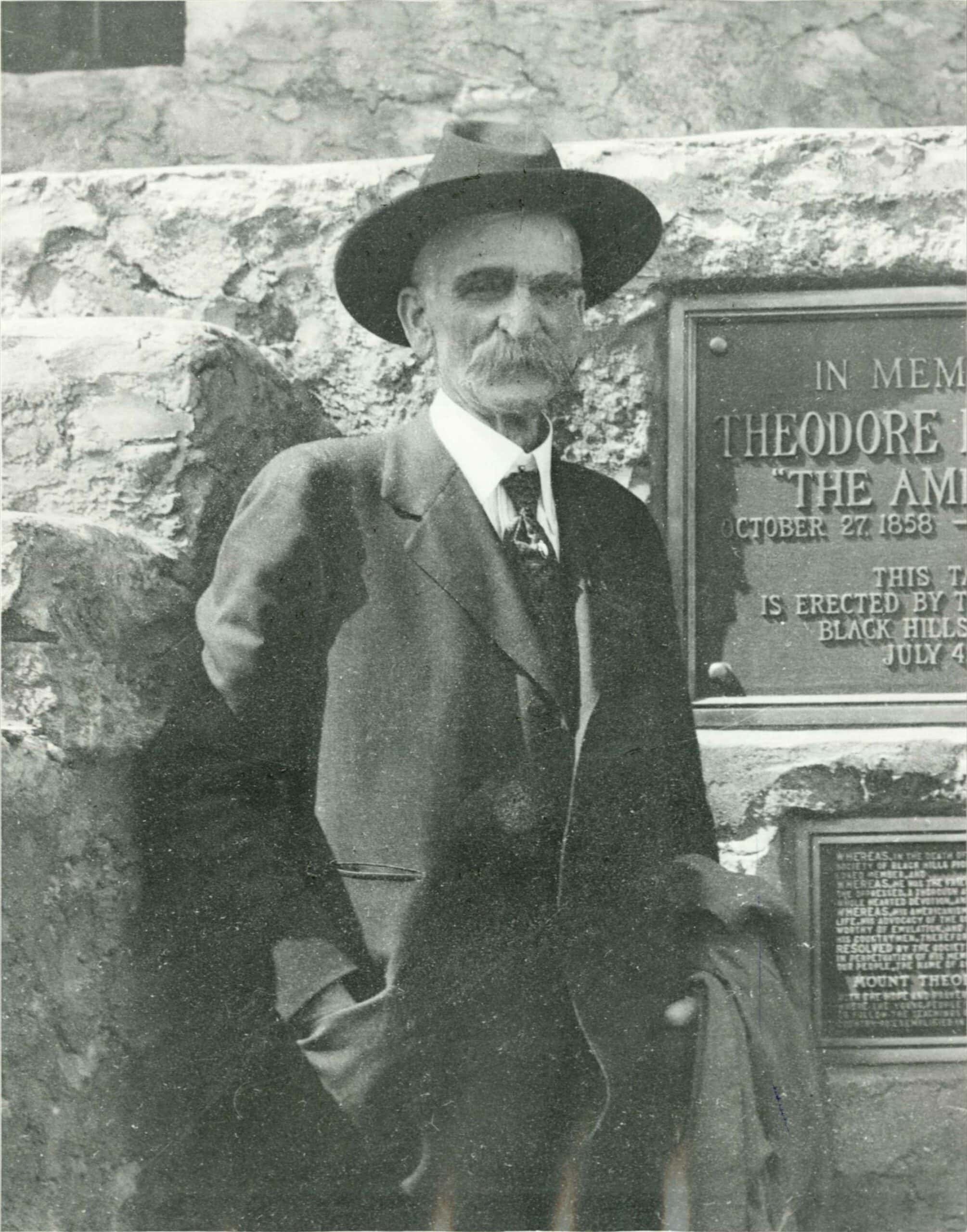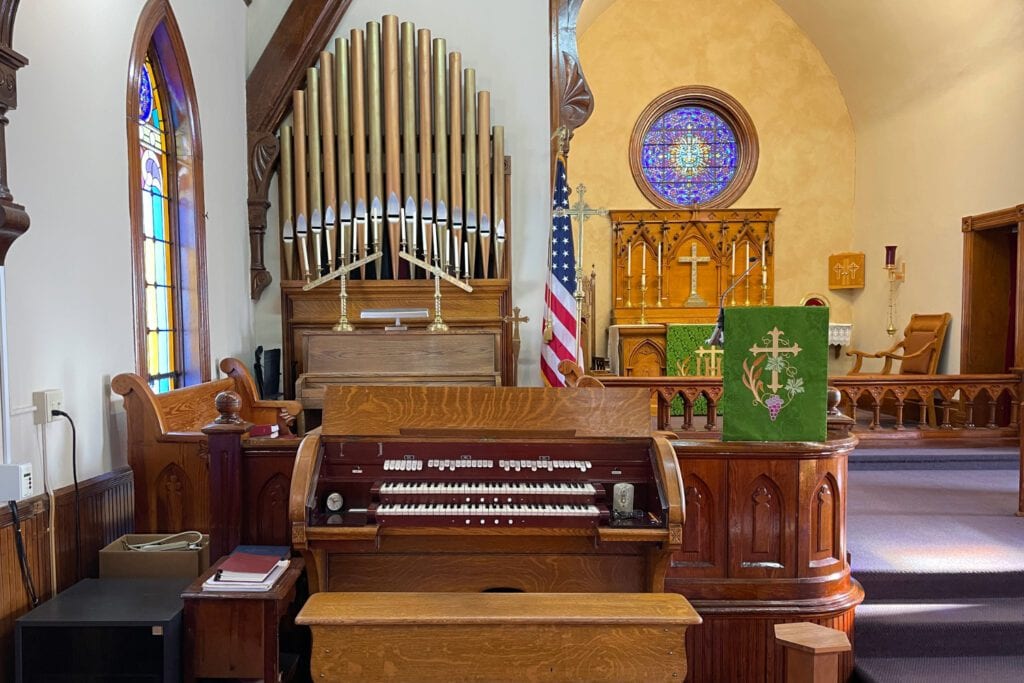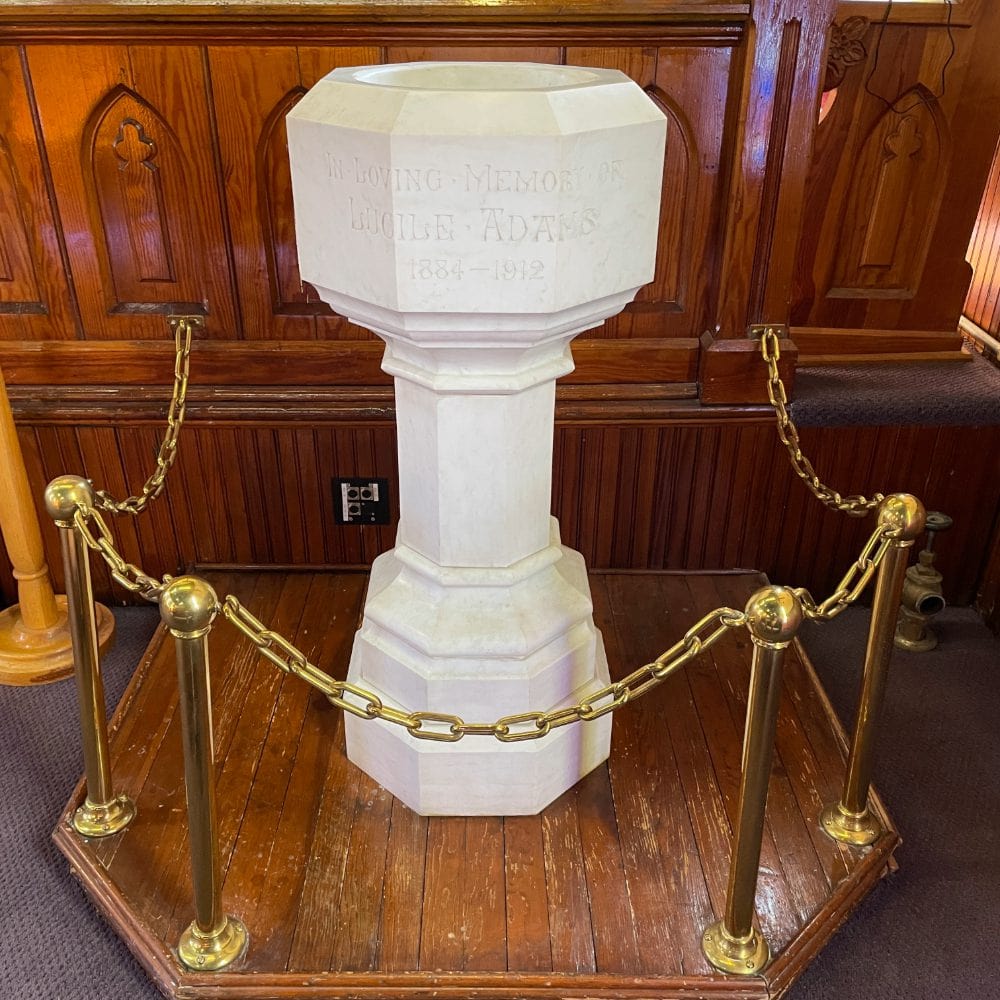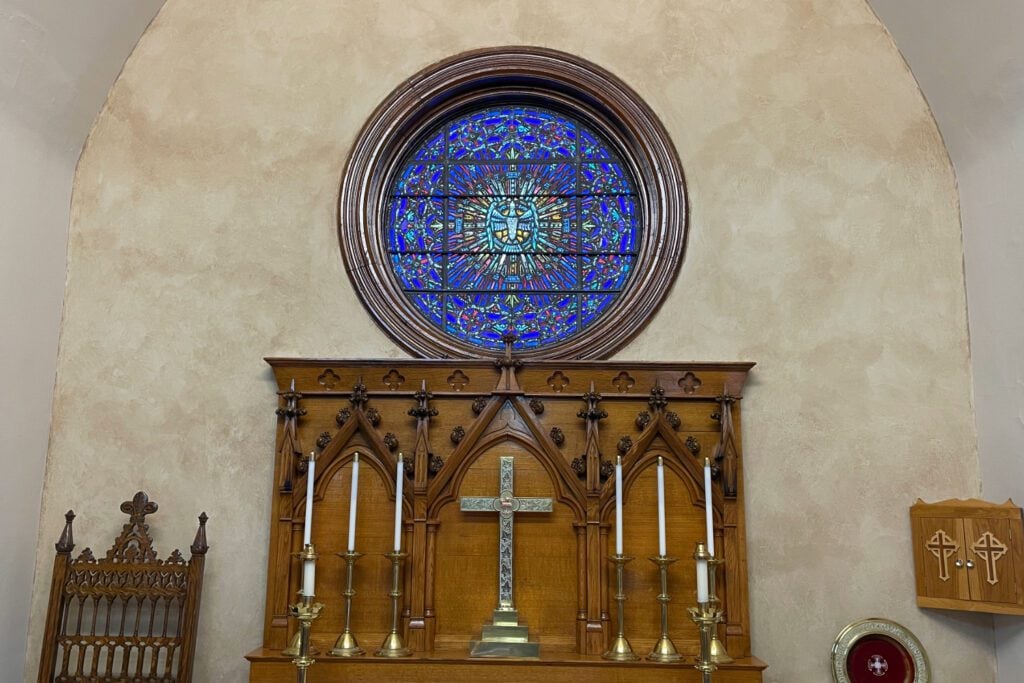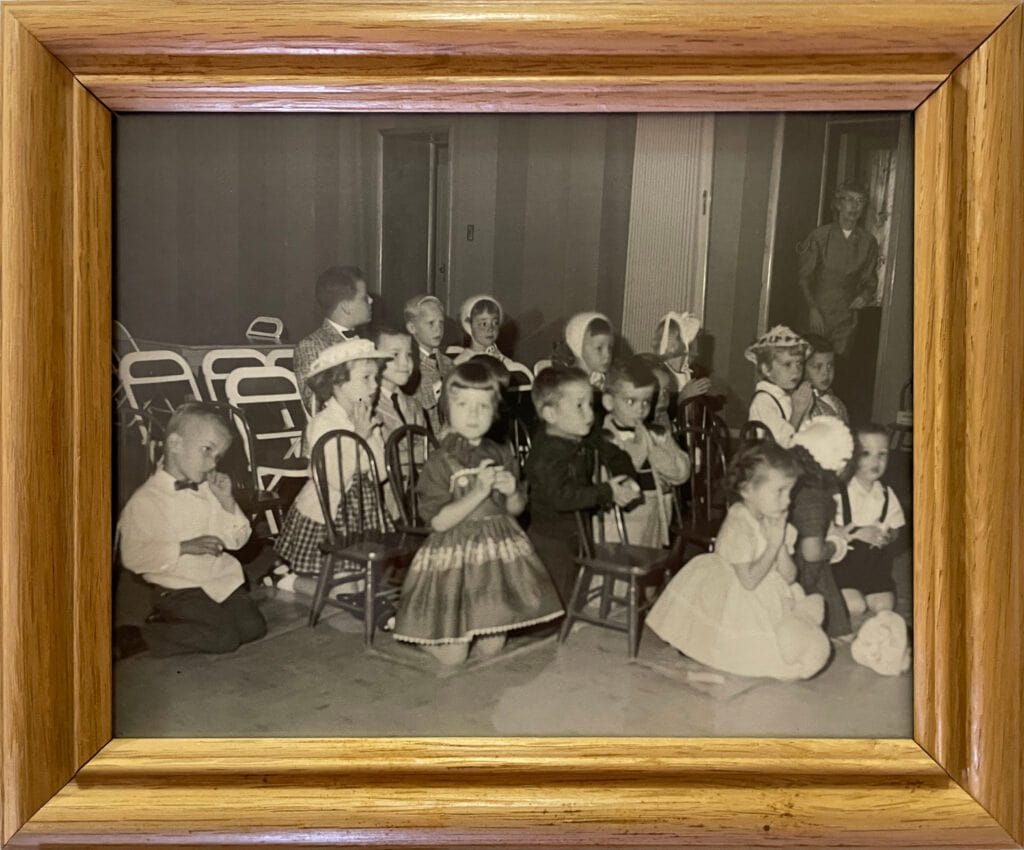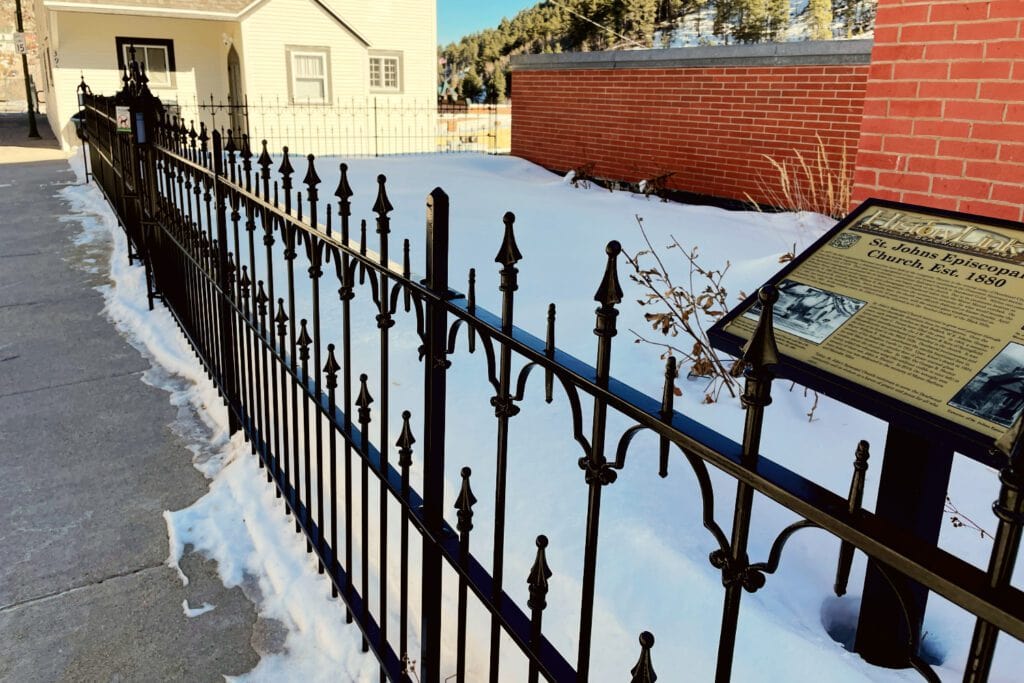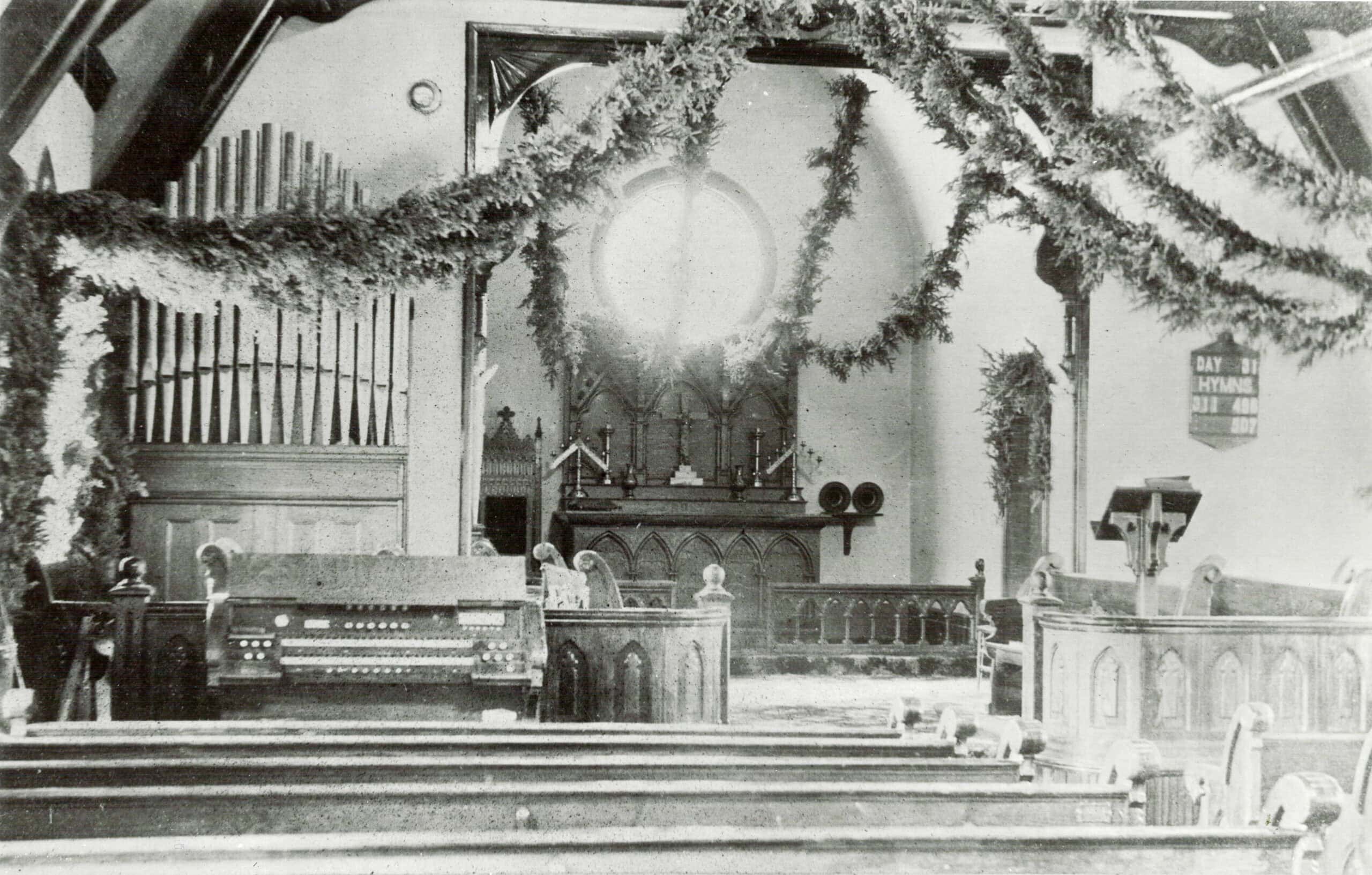Rooted in Tradition, Growing in Faith
Faithfully serving Deadwood since 1880.
St. John’s Episcopal Church is the oldest church in the Black Hills, deeply rooted in Deadwood’s history. From our early days of worship to our continuing mission today, we remain a place of faith, fellowship, and welcome for all.
Photo courtesy of the Centennial Archives at the Deadwood Library. Used with permission.
A Legacy of Faith in the Heart of Deadwood
For over 140 years, St. John’s Episcopal Church has been a place of worship, community, and history in Deadwood, South Dakota. As the oldest continuously operating church in the Black Hills, our story is one of faith, resilience, and deep connections to the people who built and shaped Deadwood.
Our Beginnings
The first organized Episcopal services in Deadwood took place in 1877 at Langrishe’s Theatre, in what was then the bustling mining camp of Deadwood City. A year later, in July 1878, a determined group of men and women formalized their efforts by establishing the Protestant Episcopal Society of Deadwood, with the goal of developing a permanent Episcopal Church in Deadwood Gulch.
By 1879, three dedicated women—Mrs. Dennee (a pianist), Mrs. Woolly, and Mrs. Tracy—led the congregation in its first regular services at Langrishe’s Theater. They were joined by 100 miners, creating a truly unique and determined congregation.
To fund the construction of a church building, they took an unexpected approach—teaching social dance lessons to miners. Their efforts raised $1,400, a remarkable amount at the time, allowing them to move forward with their vision.
A Church Built by Faith and Determination
By 1880, the congregation had purchased a lot on Williams Street, a prime location that would later make the church a recognizable feature in photographs of Deadwood taken from Mount Moriah.
On September 12, 1880, Episcopal Bishop William H. Hare presided over the cornerstone ceremony for what would become the Episcopal Church of St. John the Baptist. After seven months of construction, the church was officially dedicated on Easter Sunday, April 17, 1881.
Though services were held in the completed structure, work on the interior continued for another 10 years. The stained-glass windows were installed on Christmas Day, 1891, bringing the sanctuary to completion. Over time, St. John’s earned the nickname “the mother church of the Black Hills”, owing to its early and lasting presence in the region.
The Legend of Seth Bullock and St. John’s
St. John’s has long been tied to Deadwood’s most famous figures, including Sheriff Seth Bullock.
Legend has it that when Preacher Smith was tragically killed in 1876, Bullock—who had only arrived in Deadwood on August 3—was asked to conduct the burial service. Having little experience with religious ceremonies, he paced nervously in his backyard the night before, trying to prepare.
Using the Episcopal Book of Common Prayer, Bullock stepped forward to begin the service. But as he started, a member of the crowd unexpectedly took over, perhaps to his relief and surprise.
Seth and his wife, Martha Bullock, later became members of St. John’s, joining other prominent Deadwood families, including W.E. Adams and his family, George V. Ayres and his family, and Isaac C. Forrest and his family (with Forrest being the namesake of Forrest Avenue).
A Church Rich in Architecture & Memorials
St. John’s is more than a place of worship—it stands as a living testament to Deadwood’s enduring history.
One of its most striking features is the raked floor, designed with a gentle slope that gives the sanctuary an auditorium-like feel. Rare in modern church construction, this architectural choice enhances both visibility and acoustics, creating a uniquely intimate atmosphere.
The stained-glass windows are another highlight, particularly the circular “Dove of Peace” window above the altar, dedicated in 1934 by Mary Adams in memory of her husband, W.E. Adams. The intricate design and vibrant colors continue to inspire reflection and reverence.
A symbol of community remembrance, the baptismal font, installed in 1912, honors the legacy of Lucile Adams through the generosity of her family and Deadwood’s Mayor William E. Adams.
The historic pipe organ, built in 1904 by W.W. Steere & Son, was the first of its kind in the Black Hills. Dedicated in 1904 and lovingly restored in 1956, it remains a central part of St. John’s musical worship.
The church’s education wing, established in memory of John A. Hunter by his family, serves as a space for teaching, learning, and fellowship—continuing St. John’s legacy of nurturing faith across generations.
Finally, the wrought iron fence, dedicated in memory of Mayor Barbara and Malcolm Allen, surrounds the church as a quiet guardian of its history and spirit.
A Living Church, A Lasting Legacy
Located at 401 Williams Street, St. John’s continues to serve worshippers, visitors, and the Deadwood community. Thanks to support from city preservation efforts, the church remains a cherished piece of Deadwood’s heritage. St. John’s Episcopal Church is more than a historical site—we are a living, breathing congregation that continues to honor our past while embracing the future. All are welcome to worship with us. Join us for service, explore our history, and experience the enduring spirit of St. John’s.
A Journey of Faith Through Time
Milestones That Shaped St. John’s Legacy
For over 140 years, St. John’s Episcopal Church has been woven into the fabric of Deadwood’s history. From its humble beginnings in a bustling mining town to becoming the oldest continuously operating church in the Black Hills, each moment tells a story of faith, resilience, and community. Follow the timeline below to explore the defining events that continue to shape our legacy.
Begin Your Journey
Find Your Place at St. John’s Episcopal Church
Whether you’re seeking a place to worship, explore faith, or connect with a welcoming community, St. John’s offers a space for everyone. Discover how you can grow in faith, deepen your understanding, and become part of a tradition that has served Deadwood for generations.
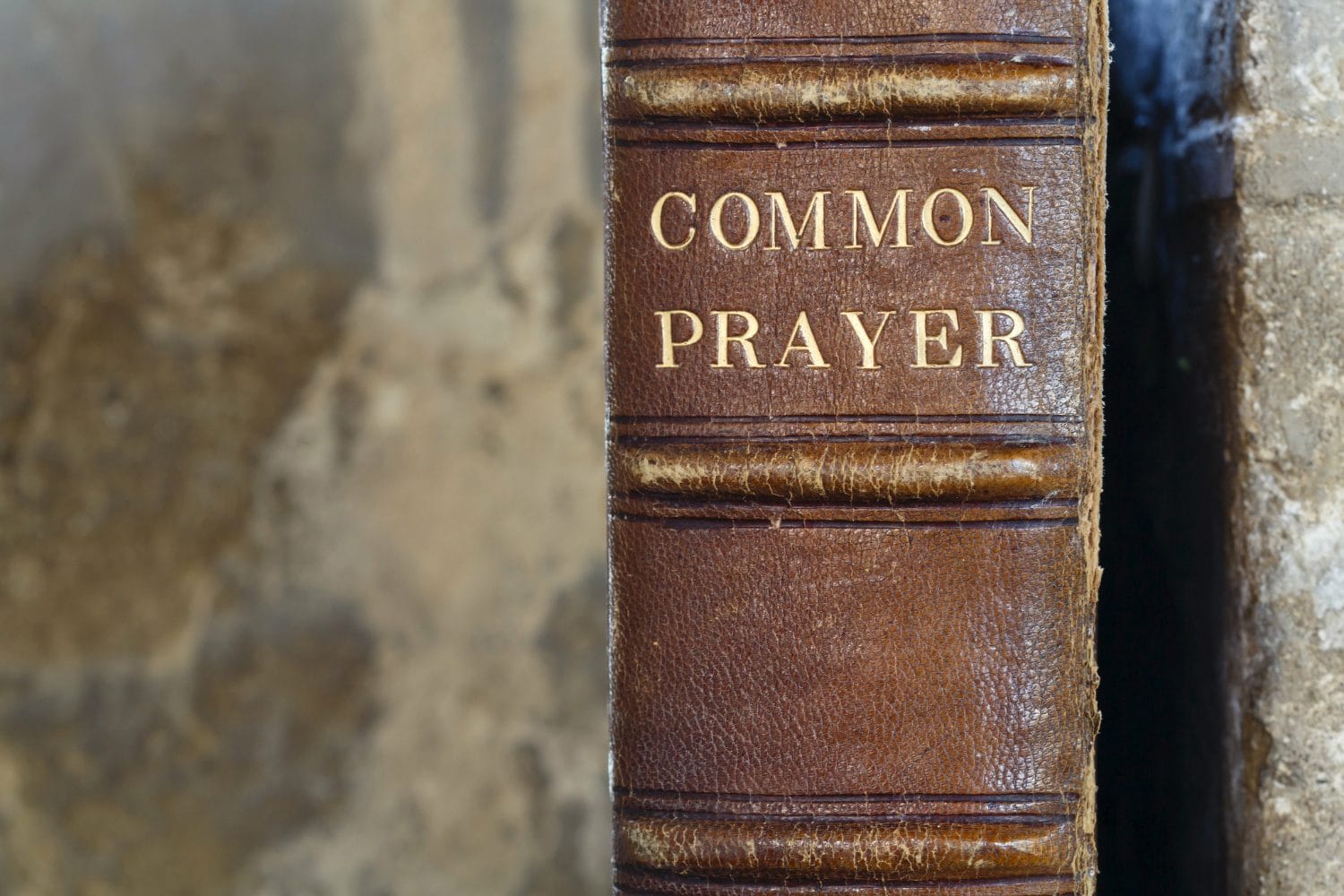
Explore Our Beliefs
Discover the timeless teachings and enduring values that continue to guide the faith, worship, and community at St. John’s Episcopal Church.
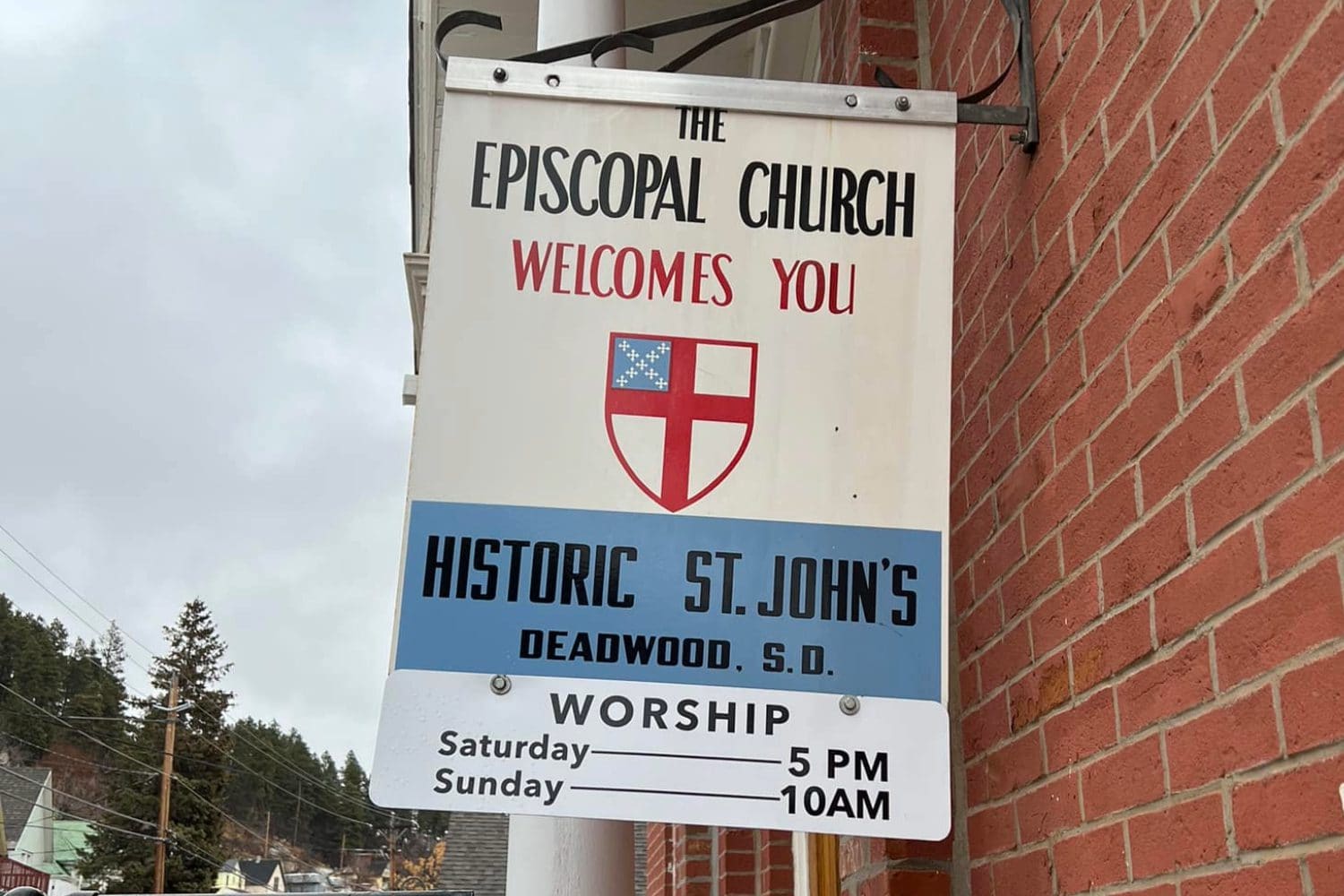
View Service Times
Join us for worship and become part of the St. John’s tradition. Services every Saturday evening and Sunday morning.

Plan Your Visit
Find everything you need to know for your first visit—whether you’re new to the area or exploring faith for the first time.

